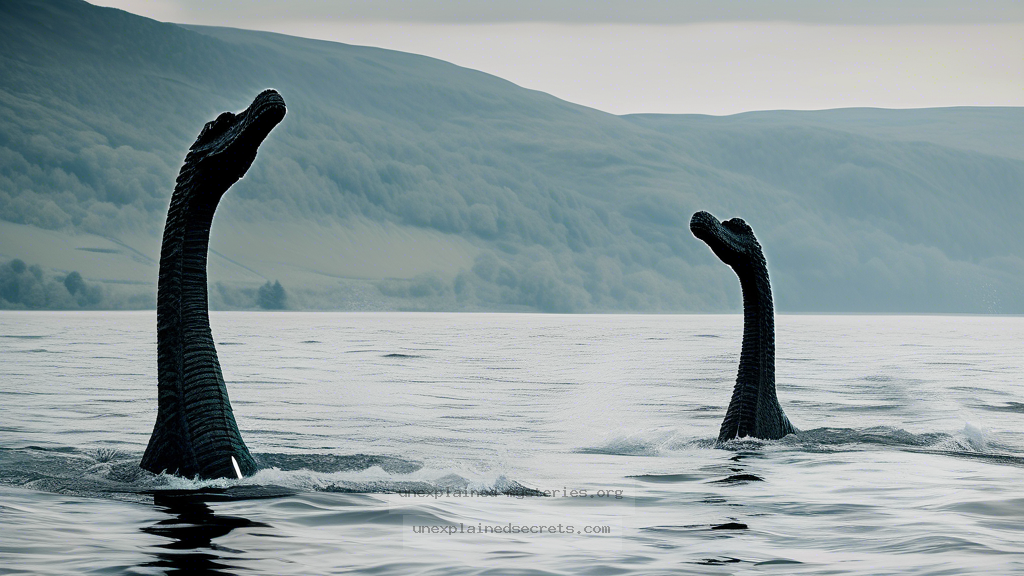What Secrets Do Sonar Detections Reveal About the Loch Ness Monster?
What Secrets Do Sonar Detections Reveal About the Loch Ness Monster?
The Loch Ness Monster, affectionately known as “Nessie,” has captured the imaginations of people around the world for decades. The mystery surrounding this legendary creature is deepened by sonar detections that hint at something lurking beneath the surface of Scotland’s largest freshwater lake. With various scientific expeditions employing advanced sonar technology over the years, the question arises: what do these sonar detections reveal about the Loch Ness Monster? In this blog post, we will delve into the fascinating world of sonar technology, explore historical sonar detections, analyze the implications of these findings, and consider the ongoing debate about Nessie’s existence.
Introduction: The Allure of Loch Ness
Loch Ness, situated in the Scottish Highlands, is not only known for its stunning scenery but also for the legends of a mysterious creature said to inhabit its waters. The intrigue surrounding Nessie has led to numerous investigations, scientific studies, and cultural phenomena. With the advent of technology, sonar has emerged as a key tool in the quest to uncover the truth about the Loch Ness Monster. Sonar, which uses sound waves to detect objects underwater, has provided some of the most compelling evidence—and confusion—about the existence of this enigmatic creature.
The Evolution of Sonar Technology
Sonar technology has evolved significantly since its inception. Originally developed for military applications during World War I, sonar has since found a place in various fields, including marine biology and oceanography. Modern sonar systems can produce detailed images of the underwater environment, allowing researchers to map the lakebed and detect anomalies that could suggest the presence of large creatures.
There are two main types of sonar used in aquatic research: active and passive sonar. Active sonar emits sound waves and listens for echoes, while passive sonar simply listens for sounds made by other objects. Both methods have been employed in the search for Nessie, with varying degrees of success.
Historical Context: Noteworthy Sonar Expeditions
One of the earliest documented sonar investigations of Loch Ness occurred in 1954 when a team from the University of Edinburgh conducted a study to locate the monster. They used sonar equipment to map the loch’s depths and discovered a large object approximately 600 feet below the surface. This finding sparked renewed interest in the creature’s existence, leading to subsequent expeditions that employed more sophisticated technology.
In 1987, the “Operation Deepscan” project utilized a fleet of boats equipped with advanced sonar to scan Loch Ness. Over several days, the team generated a detailed map of the loch and detected several large, unidentified objects. Although these findings were intriguing, they did not provide conclusive evidence of Nessie.
Core Concepts: What Do Sonar Detections Indicate?
Sonar detections can suggest the presence of large, moving objects, but interpreting these findings is complex. The sonar may pick up fish, submerged logs, or even geological formations that resemble a creature. For instance, in 2016, a sonar scan revealed a 30-foot-long object at a depth of 600 feet, reigniting debates about the creature’s existence. Yet, skeptics argued it could easily be a shoal of fish or a natural phenomenon.
Understanding the density and acoustic properties of the loch’s water also plays a crucial role in sonar detection. The freshwater environment can affect sound wave propagation, potentially leading to false positives or unidentified readings. Thus, while sonar has provided intriguing leads, it has not definitively proven the existence of Nessie.
Practical Implications: Evidence vs. Speculation
Sonar technology has undoubtedly contributed to the ongoing investigation into the Loch Ness Monster. However, the implications of sonar detections must be approached with caution. For example, the presence of large objects detected by sonar does not automatically equate to proof of a mythical creature. Researchers must analyze the data critically and consider alternative explanations.
💡 Key Point: Sonar findings are subject to interpretation, and claims about Nessie’s existence should be supported by rigorous scientific analysis.
Alternative Perspectives: The Skeptics’ View
Critics of the Loch Ness Monster phenomenon often argue that sonar detections can be misinterpreted. Many skeptics assert that the large objects detected in the loch are likely misidentified animals, including large fish like sturgeon or even man-made debris. Additionally, the phenomenon of “Nessie sightings” often correlates with environmental factors, such as weather conditions and seasonal changes, which can lead to misidentifications of ordinary wildlife.
Furthermore, the lack of physical evidence—such as remains or definitive video footage—continues to fuel skepticism. With advancements in camera technology and underwater exploration, skeptics question why no verifiable evidence has emerged despite decades of investigation.
Common Misconceptions: Debunking Myths
Several misconceptions surround sonar detections and the Loch Ness Monster. One prevalent myth is that sonar can provide definitive proof of the creature’s existence. In reality, sonar is merely a tool for detection and requires careful interpretation of the data collected.
Another common belief is that sonar can “see” creatures in the way that visual technology does. Sonar detects sound waves, meaning it can only suggest the presence of objects based on their acoustic signatures, not provide visual confirmation of what those objects are.
⚠️ Warning: Overreliance on sonar detections without corroborative evidence can lead to misguided theories about the Loch Ness Monster.
Best Practices for Investigation or Study
For those interested in pursuing investigations into the Loch Ness Monster, employing a multidisciplinary approach is crucial. This can include combining sonar technology with underwater photography, biological studies, and environmental assessments. Here are some best practices for effective investigations:
- Utilize both active and passive sonar to gather a comprehensive view of the underwater environment.
- Document all findings meticulously, including environmental conditions at the time of detection.
- Collaborate with experts in marine biology and cryptozoology to contextualize findings.
- Remain skeptical and open to alternative explanations for sonar detections.
Future Developments: Ongoing Research and Exploration
Research into the Loch Ness Monster continues, with new technologies and methodologies being developed. Advances in underwater drones and high-resolution imaging may soon allow scientists to explore the depths of Loch Ness in unprecedented detail. These innovations hold the potential to yield new insights into the loch’s ecology and any anomalous findings.
Moreover, the integration of artificial intelligence in analyzing sonar data could enhance the accuracy of detections and reduce the likelihood of misinterpretation. As technology progresses, the quest for the truth behind the Loch Ness Monster may become clearer, whether it reveals a legendary creature or merely the secrets of a deep, dark loch.
Conclusion: The Mystery Endures
Sonar detections have added an intriguing layer to the ongoing mystery of the Loch Ness Monster. While these findings spark excitement and speculation, they also underscore the importance of careful analysis and the consideration of alternative explanations. The allure of Nessie continues to captivate the public imagination, blending science and folklore in a unique narrative. As researchers push the boundaries of technology and investigation, the search for the truth behind the Loch Ness Monster remains an open question, inviting both believers and skeptics to engage in the conversation.
Other Articles
Recent Posts
- What Happened to Flight MH370? The Conspiracy Theories That Still Haunt Us
- What Secrets Lurk Within the Walls of the Infamous Trans-Allegheny Lunatic Asylum?
- What Evidence Supports the Existence of Bigfoot in the Pacific Northwest?
- What Happened to the Indus Valley Civilization? Unraveling the Mysteries of Ancient Urban Life
- Can Telepathy Be Scientifically Proven Through Laboratory Evidence?







